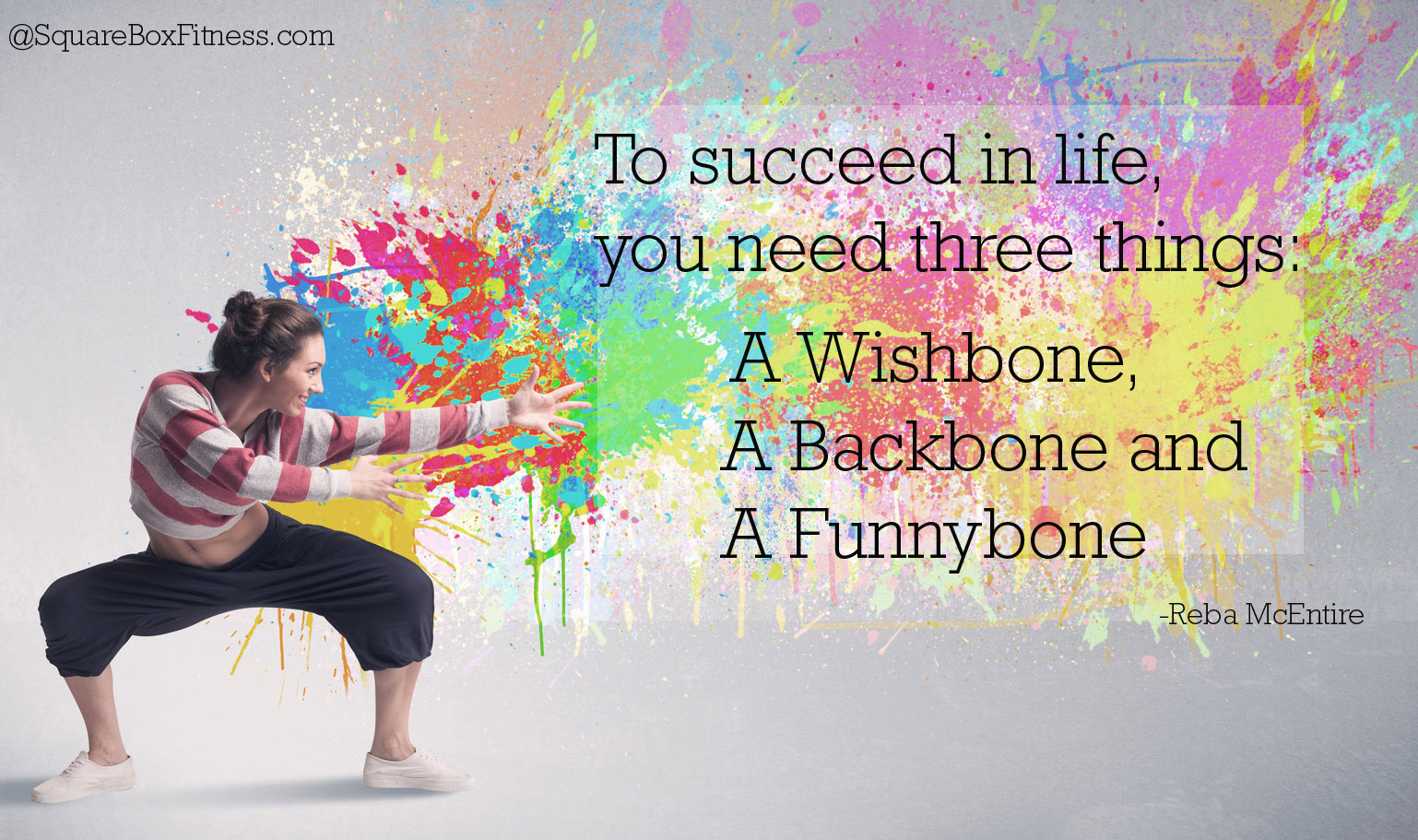This week our focus was on our back. I called the workout “restorative” because like restorative Yoga, it was designed to align the physical and mental in a series of exercises that require the attention of practice, time and patience.
Restorative becomes difficult when our desire for results become more important than accepting with humble patience the creative power of exercise to shape our body.
When we feel too busy for exercise, we become frustrated with the small gains for our perceived effort.
One of my favourite stories comes from Tony Robbins a dynamic motivational speaker, he tells of his irritations with his golf game and his instructor. His instructor replies calmly:
- ……actually, you’re only a little bit off, if you change the angle that you’re attacking the ball by just one or two millimetres, it changes the arc of travel, that change will determine whether it hits the green, the water or the sand……
In our exercising, small changes in the positioning of the hips will determine the drive and therefore the lift without compromising the back.
Working to stabilising the spine is crucial to human biomechanics and must form part of essential practice in any exercise program.
Back pain
Most people will not get through life without some element of back pain impinging on their activity.
Back pain can result for a variety of reasons; however, it is the loss of posterior muscle mass that has the biggest impact on back health.
The muscles of the legs, arms, shoulders, and hips are designed to create movement by applying force throughout a range of motion.
Muscles of the spine and trunk are designed to do the opposite and that is to stop movement.
Having a flexible or strong back does not necessarily prevent back injury, what is important is the endurance and resilience of the muscles that support the spine.
The Kyphosis Angle (Hump Back)
When the muscles of the trunk supporting the spine become weak, the bony structures fuse together to prevent movement and therefore reduce the chance of damage to the soft spinal cord and internal organs.
Kyphosis of the back (hump) increases with age, particularly in women. The angle curve can increase as much as 10 degrees for women over 40 and a further 10 degrees for women aged 55 to 60. It continues to increase with age.
Unfortunately, as the kyphotic angle increases, physical performance and quality of life often begins to decline.
Early intervention is imperative because our modern life is becoming less physically active and more dependent on the kyphotic positioning of the spine with the use of technology.
Exercising to protect the spine
The major muscles of the trunk are those muscles around the spinal column, back, and abdomen. However, the diaphragm, intercostals, and pelvic floor muscles also play a vital role in spinal health, particularly in every day lifting.
Lifting mechanics require you to lift with the hips and not with the knees. The movement firstly involves bracing the core muscles then pushing the hips back so that glutes, hamstrings, and quadriceps can act together to lever the weight up.
Bending from the waist to lift weight puts undue pressure on the lower back to both stabilize and then lift.
Our focus on lifting for exercise protects the back because the principals of lifting directly relate to movement mechanics in everyday life.
Picking something off the floor, playing with children, gardening, or even sitting and standing from a chair all require the bracing of the trunk and activation of the glutes, hamstrings, and quadriceps to move with safety.
Stress and back pain
Many theories directly link stress to back pain. A common theory is muscle tension. Unfortunately, it is unclear whether back pain or stress is the primary culprit.
Stress can drastically increase muscle tension, which in turn increases pain. Since the back contains a variety of muscles that are known to tense during stress, it is commonsense to reduce stress and therefore reduce back pain.
Stress is a reflex action of the body’s ancient mechanism for survival, hormones block the brain from instructing the body not to react as if there was a need to “fight or flight.”
We have all had dreams that we are paralyzed to run from danger or unable to scream for help. I believe the brain experiences this same anxiety when it is unable to break the body free from the bondage of hormonal hostage.
The solution is immediate exercise.
People exercise for different reasons: body shape, competition, healthy weight. These are all great reasons, but many people will lose interest and stop if they do not achieve those long-term goals almost immediately.
Let’s face it; we are pleasure seekers, and if we feel an immediate sense of pleasure we will continue, like the undeniable pleasure of eating chocolate, it is instant and easy to achieve.
Short, intense exercise is very much like eating chocolate; it instantly releases feel good hormones. Unlike chocolate the feel good can last 4 to 6 hours after the exercise session.
Most of us have been taught to believe that the volume of exercise is important; however, it is the intensity of exercise that gives access to the inner chemistry of feel good hormones.
Our 30 minute shape up circuit keeps your heart rate high throughout the workout and when you use this method of exercise, you get your cardio workout and resistance training in one short session.
Remember if you cannot get to class our “At home workout” is an investment of 9 minutes daily that will see you happier and healthier in less time!
Live well and eat well!
Anna


Recent Comments